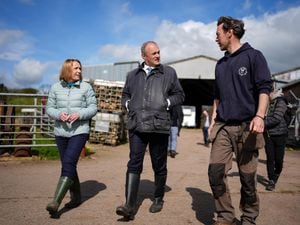Renewable revolution is not dead
Ten years ago, almost no power was produced by renewables (apart from hydro-electricity) and today it is nearly 25 per cent of national generation.

It is a remarkable feat that this country has managed to reach this milestone. In April the UK operated for three days in a row without coal power, something that hasn’t happened since the introduction of the National Grid.
Now that most subsidies have been removed form renewable generation, many people feel that from an on-farm perspective there is no more that can be done with renewables. However, this is not the case and there are still opportunities for farmers and landowners to obtain additional income or significant cost savings from energy projects. The renewable revolution is not dead, in fact far from it.
If you have been in the unfortunate position of having to renew your electricity contract recently, you will have first-hand experience of how energy prices are starting to effect business. Energy prices will continue to increase, and on-site renewable generation continues to seem very appealing.
If you have a high electricity usage, it will be profitable for you to install solar panels with returns on capital still in the region of 10 per cent. This is only possible if the consumption of electricity takes place on site. The basic sums are that you produce electricity at approximately 4p and sell or consume for approximately 14p. However, it is often only owner-occupiers that are progressing with these projects. Many commercial industrial estates or landed estates with let industrial/office space are missing a profitable income stream from selling on-site generated renewable electricity to tenants.
If we take this concept one step further, if you have land near to a high energy-using neighbour, you could look at agreeing a power purchase agreement with them and sell electricity generated on your land. It may sound far-fetched, but many farmers are already doing this. In addition, developers are already looking at large bespoke solar farms to be constructed for high energy users such as heavy industrial plants, large refrigeration sites, and so on.
If you have land near a large energy user and if both parties are keen to progress, it will be worthwhile to seek advice. For example, what value should be attributed to a rent for the land; who pays for the development costs; what happens if the user does not use the electricity or goes bust. If you need any advice on this or any other energy matters, please do not hesitate to get in touch.
Duncan Howie MRICS FAAV - Howie, Kent & Co





